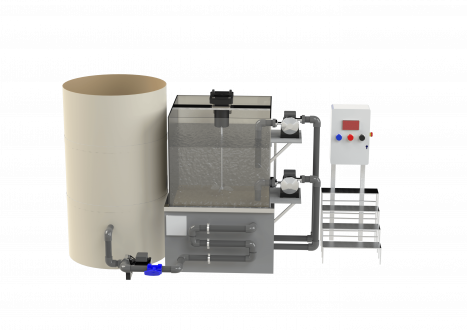Coagulation – flocculation
The coagulation and flocculation processes involve the separation of suspended particles from water, resulting in the clarification of the water. During these processes, the particles in the water stick to flakes, which are separated from the purified water by gravity or mechanical methods.
Coagulation is the process of binding particles, colloids, and some dissolved organic matter into larger aggregates. Inorganic aluminum or iron salts are primary coagulants that neutralize the charges of suspended particles. The hydrolysis of salts itself results in the formation of insoluble precipitates, which are in the form of flakes that can trap impurities. The most commonly used metal coagulants are divided into two categories: coagulants based on aluminum and iron salts. Flocculation is the binding of flakes formed during coagulation or other processes into larger flakes – flocs that are easily separated from clarified water or wastewater. Synthetic polymers are commonly used as flocculants, which can be cationic, anionic, and nonionic.
These processes are very sensitive to environmental conditions, and the physical and chemical properties of water. To effectively use coagulation and flocculation processes, it is necessary to perform experimental tests using special equipment for testing coagulation-flocculation processes, during which the most appropriate reagents and the optimal doses are selected in a particular case.
